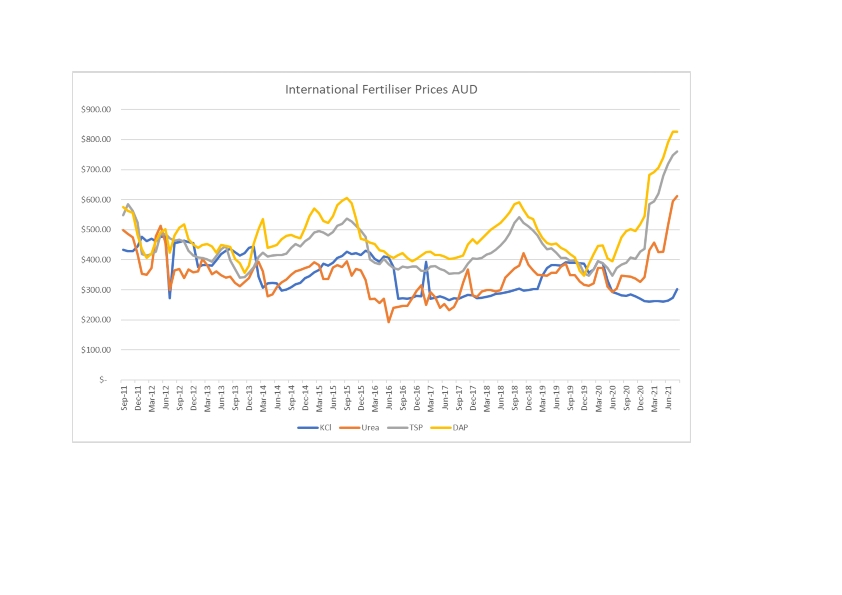As prices for agricultural commodities increase, demand for fertiliser also rises as agricultural producers respond by increasing production.
Potential global fertiliser supply is constrained by the cost of raw materials, the capital requirements for new mines and manufacturing plants and development lead times. The combination of these factors means that if demand increases faster than anticipated the response in supply can lag leading to price spikes like the one experienced in 2008-09.
The fall in demand was equally quick as a result of the global financial crisis and of farmers reassessing the economics of fertiliser use at very high fertiliser prices and declining prices for agricultural commodities. As demand quickly dropped there was excess capacity and fertiliser prices fell.
The other significant influence on global fertiliser prices is the price of fossil fuels, in particular natural gas. Fossil fuels (and air) are the main input into nitrogen fertiliser production and changes in global prices for natural gas will be reflected in nitrogen fertiliser prices over time.
The graph below illustrates the increase is world prices for fertilisers, DAP (Phosphate and nitrogen), Triple Super Phosphate (Phosphorus) and Urea (Nitrogen) during 2020-21, with Potassium Chloride (KCl) showing little change.

Next